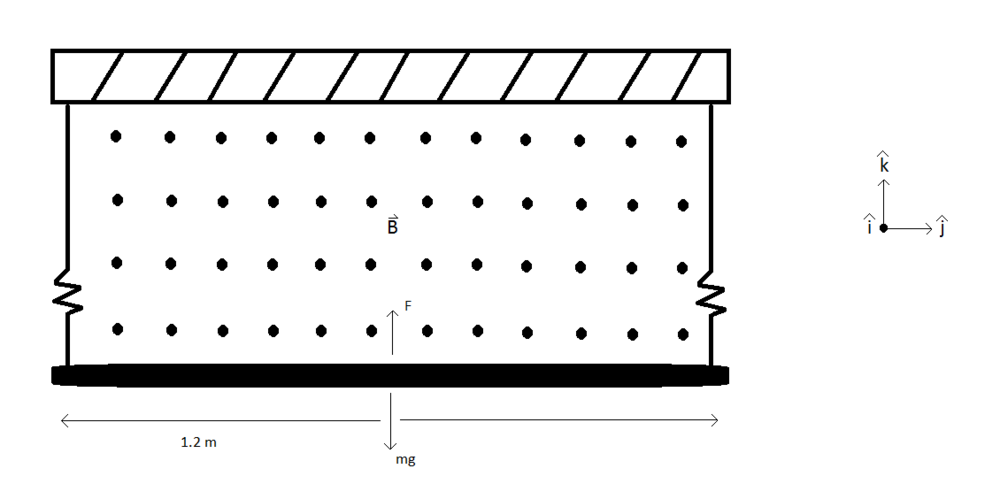Example: Magnetic Field: Difference between revisions
Amy.crosby (talk | contribs) No edit summary |
Amy.crosby (talk | contribs) No edit summary |
||
| Line 14: | Line 14: | ||
And we know the necessary Force to hold up the bar without the supports would be equal to the weight of the bar multiplied by the gravitational force. |
And we know the necessary Force to hold up the bar without the supports would be equal to the weight of the bar multiplied by the gravitational force. |
||
| ⚫ | |||
We also know that the force vector will be in the <math>\hat k</math> direction, and B is in the <math>\hat i</math> direction. |
|||
| ⚫ | |||
Revision as of 17:48, 25 January 2010
Problem
A Metal Rod with length 1.2 m and mass 500 g is suspended in a magnetic field of 0.9 T. Determine the current needed suspend the rod without supports.
Solution
Ampere's Force Law
For our problem we have
And we know the necessary Force to hold up the bar without the supports would be equal to the weight of the bar multiplied by the gravitational force.
We also know that the force vector will be in the direction, and B is in the direction.
So using the fact that We can conclude that the current is in the direction, and therefore flows to the left.
Substituting into Ampere's Law we are left with
Integrating from l=0 to l=1.2 m gives us
In conclusion we would need 4.54 Amps of current flowing to the left to suspend the bar in the magnetic field.











